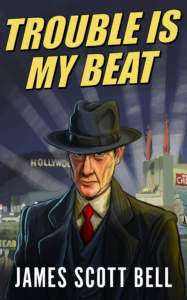The Earthling, which released wayyyy back in 1980, is one of the greatest, but most underrated movies I’ve ever seen. Three quarters of the way through the film, Patrick Foley, (William Holden) is in conversation with a traumatized six-year-old Shawn Daley (Ricky Schroeder), and delivers one of the most inspiring observations in movie history.
Dying of cancer in the Australian wilderness, Foley is trying to teach the youngster enough skills to survive in the Blue Mountains before he passes away. Recently orphaned and traumatized, Shawn is self-absorbed and spends too much time complaining, according to Foley.
Desperate, Foley finally breaks and attempts to jolt the child into understanding. “You’re not only a whining kid that wastes his time; you’re also deaf and half blind. Sure you can hear me now. But do you listen to that water? Can you hear those birds back there? Can you hear the insects – the wind and the trees creakin’ and rubbin’? You’re deaf to those frogs down there and the sun pingin’ off of these rocks. You’re deaf to your own heartbeat and me comin’ up behind you. My God, boy, there’s a whole symphony goin’ on here and you can’t hear a thing.”
And then later, he distills it down even further for Shawn, and gave me a line I used with my girls when they were growing up. “You hear, but you don’t listen.”
In writing novels, we should know who the characters are, and what drives them, and what they’re wearing (and I hope you didn’t spend two paragraphs of an info dump telling us more than we want know about their clothes).
That can be achieved by a line or two as the story progresses.
The symphony Foley is talking about, are the senses we take for granted, especially sounds and smells that are often difficult for some to integrate into the manuscript. However, writers don’t need to tell readers how something sounds. Showing is much better.
“The sound of thunder reached his ears.”
Or, “She room smelled musky.”
We don’t need to say, “Thunder outside of the musky room and the spider’s prickly legs tickled the hairs on his arm, creeped Herschel out.”
At this writing, I’m alone in our Northeast Texas cabin with the windows open to catch the fresh breeze flowing through the screens like an invisible river. Closed up for nearly three years, the dusty interior was stale and thick when we first bought the place, but now it’s fresh as line-dried sheets.
The soft spring breeze will soon be replaced by furious winds whipped up from a line of thunderstorms roaring down on the cabin from the west. I’m looking forward to the hail that’s sure to rattle on the tin roof sparking childhood memories of similar storms and rainy days playing in the hay barn.
It’s a rustic place that reminds me of those old-school cabins up in the Adirondacks. The rough cedar exterior of the 2,000 square foot retreat fits perfectly in the hardwoods that make up the entire 48.5-acre parcel. A pool wraps around three sides of the house and waves slap against the shore. Here in East Texas we call them pools, farther out in Deep East Texas they’re ponds or stock ponds, and out west, they’re called tanks.
The interior is honey-colored cedar, some commercially milled, but the rest hand-cut in a home sawmill, sanded smooth by a welder-turned-carpenter, and coated with a sealer that brings out the rich, warm colors only cedar can provide.
Thunder rumbles close enough to rattle the glass in an antique bookcase in the other room, creating an evening just like those movie makers use to dispatch promiscuous teenagers, but there are no serial killers or ax murderers creeping up to the front porch, as far as I know.
Besides, this isn’t a place full of partygoers (though I’ve been told the cabin once reeked of spilled beer and whiskey after a number of rambunctious parties thrown by the former owner), and there isn’t one young lady running around in her underwear. I’m sure, because I checked before coming in for the night.
The breeze occasionally brings another burst of air perfumed by the distinctive gin-and pencil-shavings fragrance of evergreen branchlets rubbing together in the wind.
A bat flutters past on dry, leathery wings that might creep some folks out, but I love the little guys who suck up mosquitos like vacuum cleaners. Unseen tree frogs of all sizes lend three-note voices to the symphony outside. Some chatter with a high pitch, like maddened amphibians laughing at the deeper croaking of heavy bullfrogs, who add bottom to the chorus.
Crickets under the window add their own backbeat as an owl hoots in the distance and a whippoorwill repeats a distinctively sad call over and over again, asking who whipped poor Will. Will’s name ends on a high note, reminiscent of a construction worker’s wolf whistle.
Pucker up and whistle that last note and you’ll understand what I mean.
But that’s not all. The night is never silent, even without the oncoming storm, nor are the woods. Wild hogs grunt and fight less than hundred yards away. At one point, a smaller, indignant pig squeals long and loud, and goes silent.
We’re not in the wilderness. High overhead, the hiss of a distant, passing jet seems out of place, as much as car tires sizzling down the oil road before hitting a hole. The whole vehicle rattles like it’s coming apart before passing.
The house pops as it cools, and the only other noise is the tapping on my fingers on the keyboard. Ice rattles in the glass after a sip of chilly Bombay Sapphire and tonic, the cool liquid refreshing as the evening.
Now, there it is. The screen is dusty and the damp wind across my makeshift desk brings the scent of petrichor, the familiar odor the odor of rain falling on dry ground.
Offer these senses in your work, letting the reader become part of the story, instead of hitting them between the eyes with “he heard,” or “she smelled,” or “they saw.” Spin your story in a way that the reader is there with your characters, using the recollections of their own senses.
That’s what Patrick Foley was talking about, that symphony around us that I’ve hopefully shown without telling. Add in an ax murderer and some teenagers in their underwear, and you have a thrilling scene.

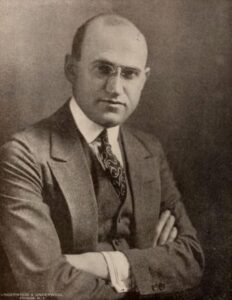
 By Elaine Viets
By Elaine Viets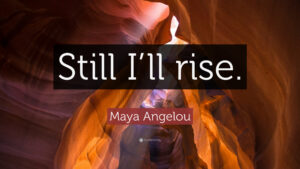 But what about ordinary writers? Should we read our own work?
But what about ordinary writers? Should we read our own work?
 When I finished, I needed to put my tongue in a sling. My sore, scratchy throat took weeks to recover.
When I finished, I needed to put my tongue in a sling. My sore, scratchy throat took weeks to recover.


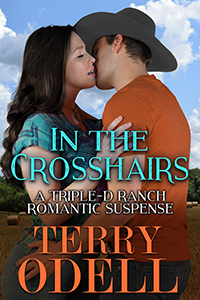
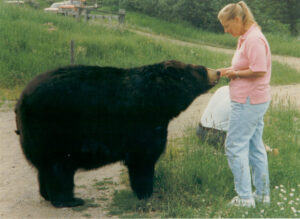
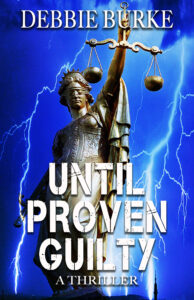
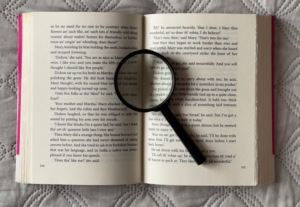
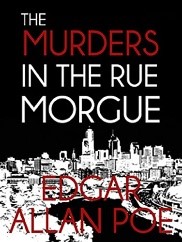 Edgar Allen Poe’s short story The Murders in the Rue Morgue (1841) is generally considered to be the first modern murder mystery, and its detective, Auguste C. Dupin, the first fictional detective. There was no monkey business in Dupin’s analysis of the horrific crime and identification of the murderer.
Edgar Allen Poe’s short story The Murders in the Rue Morgue (1841) is generally considered to be the first modern murder mystery, and its detective, Auguste C. Dupin, the first fictional detective. There was no monkey business in Dupin’s analysis of the horrific crime and identification of the murderer.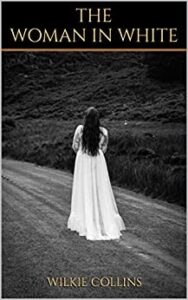 Wilkie Collins was a contemporary of Charles Dickens and is credited with the first novel-length mystery, The Woman in White (1859). The book doesn’t just stop at murder – it also touches on insanity, social stratification, false identity, and a few other themes. Collins considered the book his best work and instructed that the phrase “Author of The Woman in White” be inscribed on his tombstone. He also lays claim to the first detective novel, The Moonstone (1868).
Wilkie Collins was a contemporary of Charles Dickens and is credited with the first novel-length mystery, The Woman in White (1859). The book doesn’t just stop at murder – it also touches on insanity, social stratification, false identity, and a few other themes. Collins considered the book his best work and instructed that the phrase “Author of The Woman in White” be inscribed on his tombstone. He also lays claim to the first detective novel, The Moonstone (1868).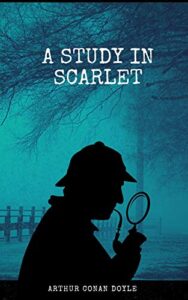 Arthur Conan Doyle published A Study in Scarlet, the first story featuring Sherlock Holmes and Dr. Watson, in 1887. In total, Doyle wrote 56 short stories and four novels featuring the famous detective. When he killed off Sherlock Holmes in The Final Problem (1893), the public outcry was so severe, Doyle had to bring him back in later works.
Arthur Conan Doyle published A Study in Scarlet, the first story featuring Sherlock Holmes and Dr. Watson, in 1887. In total, Doyle wrote 56 short stories and four novels featuring the famous detective. When he killed off Sherlock Holmes in The Final Problem (1893), the public outcry was so severe, Doyle had to bring him back in later works.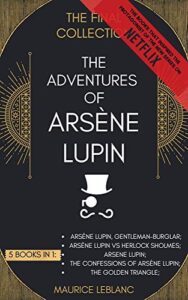 Maurice Leblanc began a mystery series in 1905 featuring the gentleman thief Arsene Lupin, a character who’s been described as a French version of Sherlock Holmes. In all, Leblanc wrote 17 novels and 39 novellas with Lupin as hero. Check out
Maurice Leblanc began a mystery series in 1905 featuring the gentleman thief Arsene Lupin, a character who’s been described as a French version of Sherlock Holmes. In all, Leblanc wrote 17 novels and 39 novellas with Lupin as hero. Check out 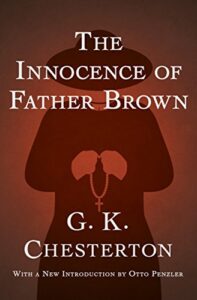 G.K. Chesterton is credited with creating the cozy mystery genre with a series of 53 short stories begun in 1910 featuring the Roman Catholic priest and amateur detective, Father Brown, who uses his intuitive understanding of human nature to solve crimes. The character was so popular, it inspired the Father Brown TV series that began in 2013.
G.K. Chesterton is credited with creating the cozy mystery genre with a series of 53 short stories begun in 1910 featuring the Roman Catholic priest and amateur detective, Father Brown, who uses his intuitive understanding of human nature to solve crimes. The character was so popular, it inspired the Father Brown TV series that began in 2013.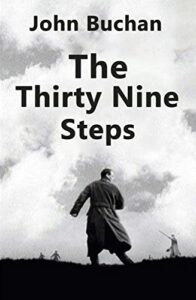 The Thirty-nine Steps (1915) by Scottish author John Buchan was the first of five novels featuring Richard Hannay. a man on the run who had been unjustly accused of murder. There are a couple of movie versions of The Thirty-nine Steps, but my favorite is the 1935 Hitchcock film starring Robert Donat.
The Thirty-nine Steps (1915) by Scottish author John Buchan was the first of five novels featuring Richard Hannay. a man on the run who had been unjustly accused of murder. There are a couple of movie versions of The Thirty-nine Steps, but my favorite is the 1935 Hitchcock film starring Robert Donat.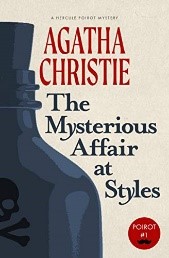 Cozy mysteries became very popular in the 1920’s and 30’s with several great British authors. Agatha Christie’s first novel The Mysterious Affair at Styles (1920), featured Hercule Poirot, a sleuth who used his “little gray cells” to solve mysteries. Poirot showed up in 33 novels and over 50 short stories. (I will have much more to say about Dame Agatha in a future post.)
Cozy mysteries became very popular in the 1920’s and 30’s with several great British authors. Agatha Christie’s first novel The Mysterious Affair at Styles (1920), featured Hercule Poirot, a sleuth who used his “little gray cells” to solve mysteries. Poirot showed up in 33 novels and over 50 short stories. (I will have much more to say about Dame Agatha in a future post.)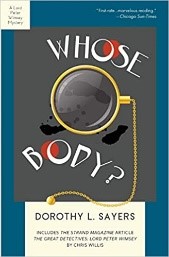
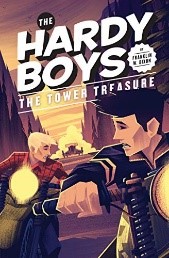
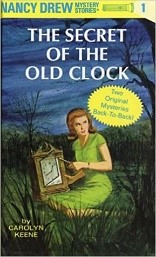
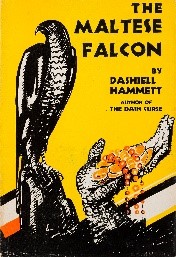 Hardboiled detective fiction became popular in the 1920’s and extended through the 20th century. Dashiel Hammett became famous for his character Sam Spade in The Maltese Falcon (1929). He also created the sophisticated couple Nick and Nora Charles in The Thin Man (1933). Strangely, Hammett wrote his final novel more than 25 years before his death. Why he stopped writing fiction is something of a mystery in itself.
Hardboiled detective fiction became popular in the 1920’s and extended through the 20th century. Dashiel Hammett became famous for his character Sam Spade in The Maltese Falcon (1929). He also created the sophisticated couple Nick and Nora Charles in The Thin Man (1933). Strangely, Hammett wrote his final novel more than 25 years before his death. Why he stopped writing fiction is something of a mystery in itself.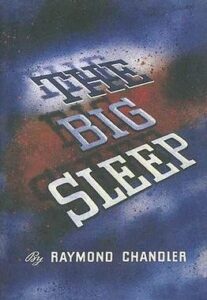 Raymond Chandler was forty-four years old when he began his journey as an author. His first novel, The Big Sleep (1939), introduced the world to private detective Philip Marlowe. In addition to his short stories, Chandler wrote seven novels, all with Marlowe as the hero. His prose is widely admired and his use of similes is famous. Here’s an example from The Big Sleep: “The General spoke again, slowly, using his strength as carefully as an out-of-work showgirl uses her last good pair of stockings.”
Raymond Chandler was forty-four years old when he began his journey as an author. His first novel, The Big Sleep (1939), introduced the world to private detective Philip Marlowe. In addition to his short stories, Chandler wrote seven novels, all with Marlowe as the hero. His prose is widely admired and his use of similes is famous. Here’s an example from The Big Sleep: “The General spoke again, slowly, using his strength as carefully as an out-of-work showgirl uses her last good pair of stockings.” “Once upon a time,” I told my two oldest grandboys, “there were two baby monsters. One was green and one was blue. They lived in a cave with their mom and dad…”
“Once upon a time,” I told my two oldest grandboys, “there were two baby monsters. One was green and one was blue. They lived in a cave with their mom and dad…”